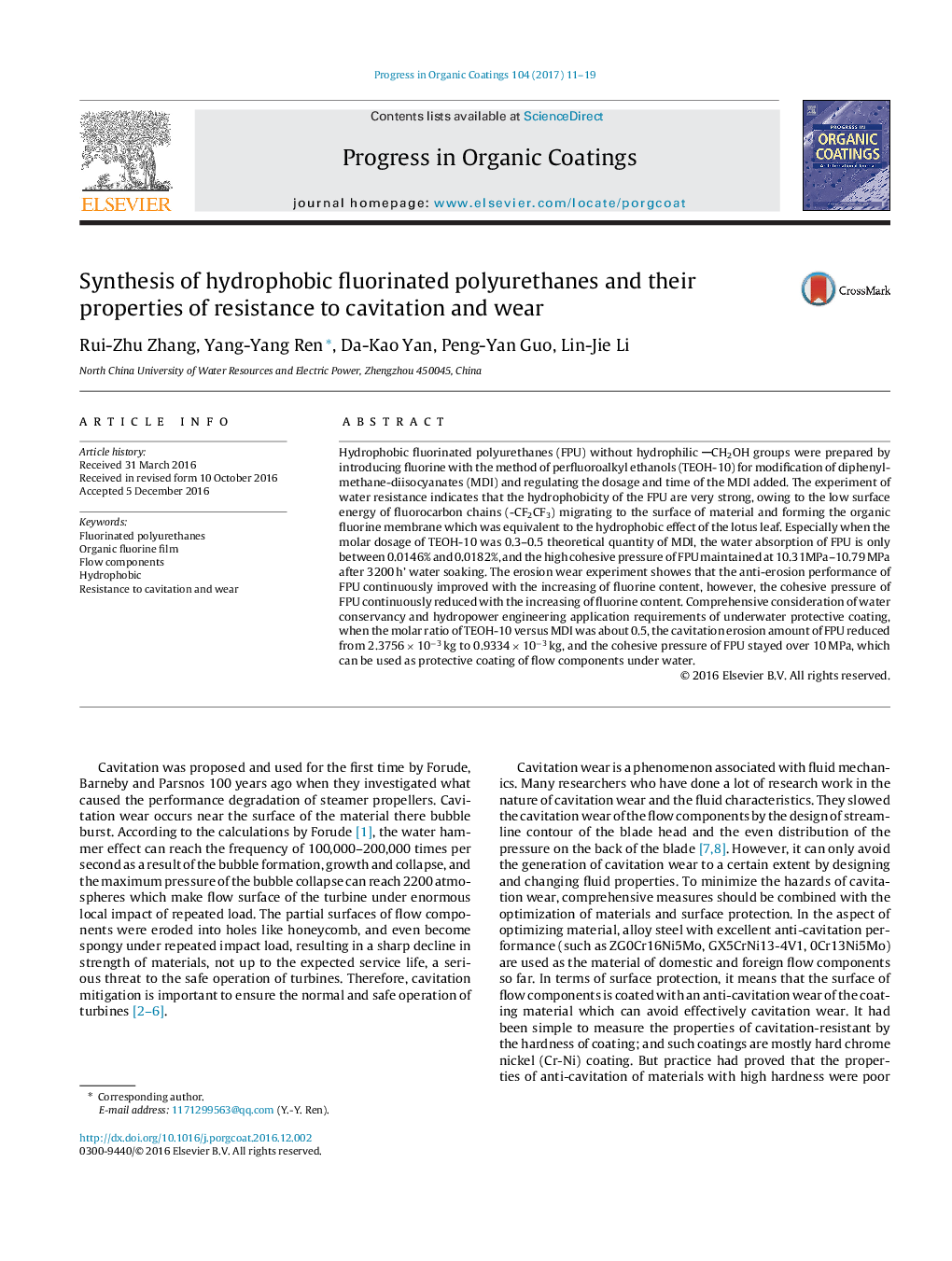| Article ID | Journal | Published Year | Pages | File Type |
|---|---|---|---|---|
| 4999238 | Progress in Organic Coatings | 2017 | 9 Pages |
Abstract
Hydrophobic fluorinated polyurethanes (FPU) without hydrophilic CH2OH groups were prepared by introducing fluorine with the method of perfluoroalkyl ethanols (TEOH-10) for modification of diphenyl-methane-diisocyanates (MDI) and regulating the dosage and time of the MDI added. The experiment of water resistance indicates that the hydrophobicity of the FPU are very strong, owing to the low surface energy of fluorocarbon chains (-CF2CF3) migrating to the surface of material and forming the organic fluorine membrane which was equivalent to the hydrophobic effect of the lotus leaf. Especially when the molar dosage of TEOH-10 was 0.3-0.5 theoretical quantity of MDI, the water absorption of FPU is only between 0.0146% and 0.0182%, and the high cohesive pressure of FPU maintained at 10.31MPa-10.79Â MPa after 3200Â h' water soaking. The erosion wear experiment showes that the anti-erosion performance of FPU continuously improved with the increasing of fluorine content, however, the cohesive pressure of FPU continuously reduced with the increasing of fluorine content. Comprehensive consideration of water conservancy and hydropower engineering application requirements of underwater protective coating, when the molar ratio of TEOH-10 versus MDI was about 0.5, the cavitation erosion amount of FPU reduced from 2.3756Â ÃÂ 10â3Â kg to 0.9334Â ÃÂ 10â3Â kg, and the cohesive pressure of FPU stayed over 10Â MPa, which can be used as protective coating of flow components under water.
Keywords
Related Topics
Physical Sciences and Engineering
Chemical Engineering
Process Chemistry and Technology
Authors
Rui-Zhu Zhang, Yang-Yang Ren, Da-Kao Yan, Peng-Yan Guo, Lin-Jie Li,
